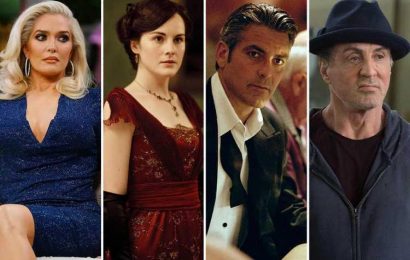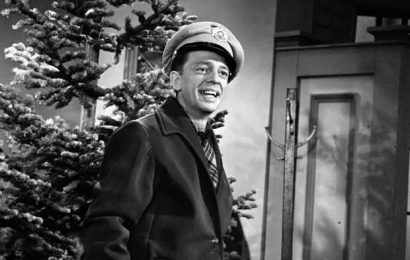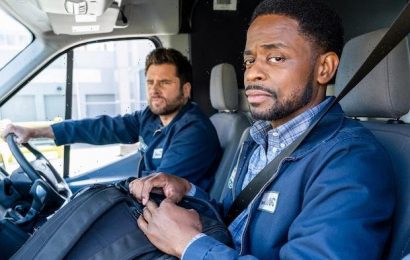No one needed “Obi-Wan Kenobi.”
The Star Wars limited series on Disney+ was always going to tread familiar territory, picking up with the aging Jedi (Ewan McGregor) between events of “Revenge of the Sith” and “A New Hope.” Most characters fates were known between existing Star Wars shows and movies, which arguably lowered the show’s narrative stakes — but ultimately increased its emotional impact.
The final episode is as strong a case as any for “Obi-Wan Kenobi” to remain a one-season wonder. The show is six episodes of galactic therapy for fans and characters who spent years reconciling what happened between “Revenge of the Sith” and “A New Hope,” but it neatly threads that needle and doesn’t need to continue. McGregor may not reprise this character or utter the words “Hello there” ever again, but it is a satisfying sendoff that leaves the character with something resembling catharsis.
At its core, “Obi-Wan Kenobi” has from the start been about the connection between Obi-Wan and Anakin Skywalker (Hayden Christensen), as teacher and student, as close friends, and now as enemies on opposite sides of the Force with Anakin (almost) fully transformed into Darth Vader (voiced by James Earl Jones). There is ostensibly little left to cover in this doomed relationship after a mesmerizing duel in “Revenge of the Sith,” but showrunner Joby Harold and his writers manage to both subtly and elegantly find the right headspace for both characters in this series.
In Episode 6, Vader and Obi-Wan face off once more — a showdown that feels a little Avatar in all the right ways — with Obi-Wan stronger now than at the start of the series and Vader, ironically, still not at the peak of his power. Director Deborah Chow deliberately showcases this in the fight, with shots of Vader stumbling or groaning, easier to knock out than he’s ever been in live action because there’s still an impulsive kid Jedi inside him.
But that ends now.
When Obi-Wan finally lands a blow to the iconic Vader helmet, it breaks through. Beneath the singed metal is a human face, an eye instantly recognizable to viewers and to Obi-Wan as the man Vader used to be.
“Anakin?” Obi-Wan whispers. He has always known, but perhaps did not believe it fully until this moment, with both Vader and Anakin immediately, incontrovertibly visible.
“Anakin Skywalker is gone,” is the reply, a distorted mix of Christensen and Jones’ voices twisted together. “I am what remains.” It’s a standout character moment in a show chock-full of them, and it is highly effective. “You didn’t kill Anakin Skywalker,” he tells Obi-Wan. “I did.” It’s undeniable (although Obi-Wan is not blameless here) and echoes what Obi-Wan will tell Luke years from now about Darth Vader killing his father.
“Obi-Wan Kenobi”
Lucasfilm Ltd.
The duel itself is nothing extravagant, but that’s a strategic move on Chow’s part. To go into production on “Obi-Wan” with the express or even latent intent to outdo that “Revenge of the Sith” fight would be misguided and likely futile. As that warped voice said moments ago, Anakin Skywalker is gone. So is the Obi-Wan Kenobi that he fought last time. Their battle cannot be recreated or eclipsed when its key players have changed so drastically.
But it’s exactly the thirst for that kind of spectacular showdown that brought the artist formerly known as Anakin to this very moment. His last fight with Obi-Wan qualifies as defeat — though both Anakin and Vader would view only death as true defeat — and he’s here as the cocksure padawan from Episode 5’s flashbacks ready for a rematch and a trophy. Obi-Wan isn’t going to give him the satisfaction on either front; he turns his back on an exhausted Vader, neither victorious nor defeated and still desperately craving the validation of destroying his old master.
Much of the “Obi-Wan” finale is denouement, including this moment, establishing where characters will be psychologically by the events of “A New Hope” in 10 years. Vader and Obi-Wan will mature, shifting their focus from each other to more pressing matters like expanding the Empire or training Luke. On Tatooine, Reva’s hunt for Luke leads her to the Lars family moisture farm, where Owen (Joel Edgerton) and Beru (Bonnie Piesse) ask Luke to hide and them position themselves inside with blasters. The Lars don’t get much Star Wars screen time before their deaths propel Luke into his “A New Hope” adventures, so it’s refreshing to see them armed and resolute, protecting Luke like he’s their son — because he is. It drives home the loss of their protection in “A New Hope” and explains their hesitance for him to go looking for Ben Kenobi or venture any further than Tosche Station.
In the end, Reva (Moses Ingram) can’t bring herself to kill the boy. She flashes back once to Anakin’s massacre of younglings at the Jedi Temple, but can’t bring herself to avenge them by taking another child’s life. She breaks down before Obi-Wan — sealing Ingram’s tour de force performance — wondering if this makes her like Vader himself.
“Now you’re free,” says Obi-Wan. “Now we both are.” Free of their grudges against Anakin, perhaps, but not free of Vader or the Empire, which are poised to bring nothing but destruction to the galaxy for the next decade while Obi-Wan ostensibly takes a nap. His decision to walk away from Vader for a second time instead of killing him is tougher to swallow this time around, when he has watched the Empire murder innocents, separate families, and spread misery throughout the galaxy.
“Obi-Wan Kenobi”
Lucasfilm Ltd.
Back on Mustafar with a shiny new helmet, Darth Vader debriefs with his master, a hologram transmission of Darth Sidious (Ian McDiarmid). He swears his allegiance to the Empire and forswears his weakness for Obi-Wan Kenobi. If and when they meet again, it will not be by choice, but by fate, and neither will hold back.
To wrap things up with a little bow, Obi-Wan pays a last visit to the Organa family on Alderaan. He tells Leia (Vivien Lyra Blair) how exceptional she is and that she gets it from her parents — not revealing their identities or what happened to them, but giving her something nice to hold on to. He tells her they should be careful if they meet again, a line that exists solely to account for Leia acting like they are strangers at the start of “A New Hope.” It’s thoughtful but not necessary from the “Obi-Wan” writers, since these two are about to spend 10 years apart and who can really blame Leia if she blocks out the part of her childhood where she was kidnapped and almost killed?
In its final moments, “Obi-Wan Kenobi” delivers the reunion teased since its first episode — truly since “Revenge of the Sith” when Yoda (Frank Oz) told Obi-Wan he could commune with Qui-Gon Jinn (Liam Neeson). Qui-Gon’s Force ghost materializes in the desert of Tatooine, with Obi-Wan now finally strong enough for their reunion, both physically and emotionally as he leaves behind his weakness for Anakin. They have much to catch up on, this master and padawan, and years ahead to do it.
The best Star Wars stories have always been like this one: Character-driven, no matter how action-packed they are, leaving viewers with a lasting impression of love, loss, and human connection that lingers long after credits roll. Fans may never agree on what makes Star Wars great by definition: Is it taking risks like “Rogue One” or “The Last Jedi?” Is it returning to the Skywalkers with a whole prequel trilogy and “The Book of Boba Fett?” Is it expanding the canon with new characters and adventures, or is it bringing back old favorites for one last hurrah on Tatooine?
With “Obi-Wan Kenobi,” it’s all of that. And it is enough.
“Obi-Wan Kenobi” is now streaming on Disney+.
Source: Read Full Article










